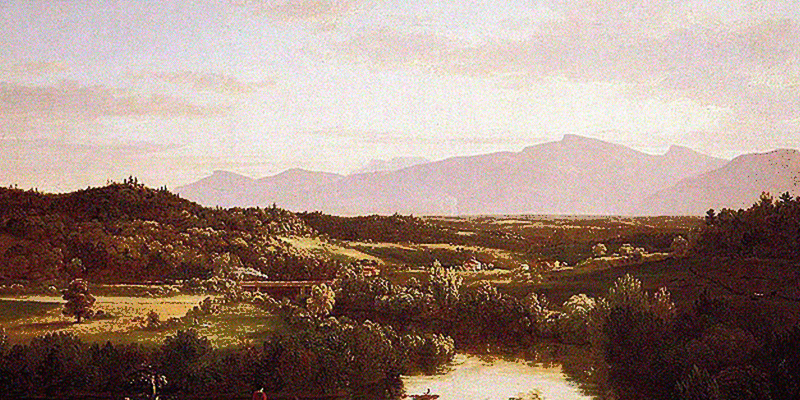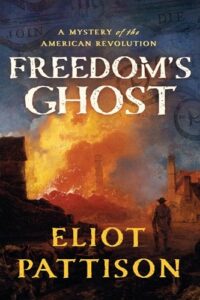Nature can be a harsh partner for the novelist. Trying to integrate it into a passage or entire plot is a daunting effort that doesn’t always succeed. I don’t refer to snapshots of snow-capped mountains or purple sunsets tacked onto a scene for casual color, but rather the more ambitious weaving of the land and nature into a tale to drive plot, develop character or convey underlying themes. Inviting the power and beauty of nature into a novel can be a humbling task, complicated by the many ways people experience it. “Nature and books,” Emerson aptly observed, “belong to the eyes that see them.” The cry of a loon may be a haunting summons for some, but just background noise for others.
Some novelists elevate nature to the role of a major actor in their drama. The title character in Melville’s Moby Dick is a profound example, in which the character arc of nature’s leviathan evolves from ocean-dwelling thug to cunning opponent and ultimately to an instrument of destiny. Hemingway’s Old Man and the Sea is a two character drama, with only one of them a human. Conrad’s Lord Jim opens with an unforgiving act of nature which defines, and torments, the protagonist for the rest of his life. In other contexts some natural phenomenon or the land itself is posed as foe or immutable obstacle to a protagonist’s goal.
Few can match Willa Cather’s deft use of the natural world to shape and mirror characters, reflected again and again in O Pioneers with portending passages like “the great fact was the land itself, which seemed to overwhelm the little beginnings of human society.” Her characters, and her invocations of the earth, give poignant emphasis to Emerson’s observation of nature being a subjective experience, variously reflecting how it can be a source of uplifting spirituality, despairing defeat, or unfulfilled promise. Under her seasoned pen the land takes a measure of the human soul, and some souls fail. This visceral connection to the earth can also be found in classics like Cooper’s Leatherstocking Tales and Conrad Richter’s The Awakening trilogy. The results are works of profound insight into the pioneer experience.
William Faulkner expertly wove nature into many of his tales, as reflected in his classic Go Down Moses. The swamp dwelling protagonist in Delia Owens’ Where the Crawdads Sing is defined in many ways by her coastal marshes. Owens’ novel is an example of how nature can be leveraged for a powerful role in mystery and crime novels. It is an actor without motive or conscience. It can be an arbiter of spiritual and physical strength. It can be a vehicle for concealment and terror. It can give refuge, inflict injury, kill and heal. Set a bewildering murder in a raging tempest, swamp or wilderness and it becomes an enigma wrapped in a mystery. Nature can be a potent partner in crime.
The character arcs in these books correlate with the respective character’s perception and experience with the natural world. My own Native American characters demonstrably sag in both body and spirit when they are too long in an urban environment, separated from their natural milieu. All of my Bone Rattler books incorporate such tribal figures and the intertwined roles of native and nature often become a vital element of both plot and character development. My protagonist arrives in the New World with popular preconceptions of the wilderness and its natives as terrifying and savage. This begins to feel like a hollow, even guilty, place in his conscience as his experiences suggest otherwise. His complex encounters with natives and raw nature gradually fill that hollow, and this dynamic plays an important role in his becoming more American. Learning to see nature as a constant stream of miracles, surviving its adversities and acknowledging the natives’ cryptic connection with the earth became, I suggest in my novels, important ingredients in developing the inquisitive self-reliance and love of freedom that anchored the evolving American identity.
These elements are underscored by sources from the period. One of my favorite touchstones in researching my novels are newspapers of the time, which have survived better than those of the 19th century because their paper was made from durable cotton fiber and not the acidic newsprint of the next century, which over time renders some papers too brittle to handle. Seldom do I find a paper from the 18th century that does not prominently feature some “natural news” on, for example, wind and current affecting sailing conditions, reports on farming challenges, weather generally, or some discovery in nature such as a giant tree. The people of the time lived much closer to nature than we do today. Ninety-five percent of the colonial population were farmers, meaning they lived close to the earth and the cycles of nature. Even the urban population was much closer to natural phenomenon than it is today, often focusing on lightning, a popular topic for both entertainment and science.
These points were brilliantly illuminated in Frederick Jackson Turner’s famous 1893 essay on The Significance of the Frontier in American History, the first scholarly effort to trace how this engagement with nature shaped America. Turner described America’s challenging encounter with nature as a process of “perennial rebirth.” It was the “crucible of the frontier” that “Americanized” the colonists and created new “intellectual traits of profound importance” to the rise of democracy on the continent.
From the perspective of the novelist, in no other context is the old writer’s adage of “show don’t tell” more relevant. The reader can’t be instructed to engage with nature, he or she has to feel engaged. Too many writers simply toss in curt descriptive phrases reflecting a natural condition and move on, leaving the moment unfulfilled and losing the opportunity for a richer reading experience. The first step in inviting nature onto the page doesn’t have to be arduous. “Hannah stepped into the rosy dawn and saddled her horse,” as a simplistic example, is not nearly as engaging as “Hannah stepped out into the dawn to find the larks awakening. She whistled toward the meadow and smiled as they replied, then lifted her saddle to the mare.” In both, the central action remains the same—Hannah steps outside and saddles her horse—but the latter passage reveals Hannah as someone connected with nature and offers the hint of deeper revelations to come.
Ultimately, when well executed such novels can lure the reader into a new appreciation of, even a new relationship with, the natural world, a satisfying experience for both writer and reader. We need the wild, which exists not just in wilderness, but in meadows, groves of trees, the flight of a bird, an urban elm, or the smallest of gardens. It offers seeds of imagination and the breeze for soaring high. As a writer, a reader, and a fellow traveler on the human journey, I have learned how important it is to recognize that we are one small part of a vast spectrum of life, that there are wonderful discoveries to be made in every forest, that nature indeed offers up one mysterious miracle after another.
Once, as writer or reader, you tap into this natural resonance, you will realize there is much of nature in human nature, and that some of its mystery lies within ourselves. If you need to be convinced, then take a moment to contemplate one of the most wonderful facts I have ever encountered: fifty percent of our human DNA is shared with trees.
***


















